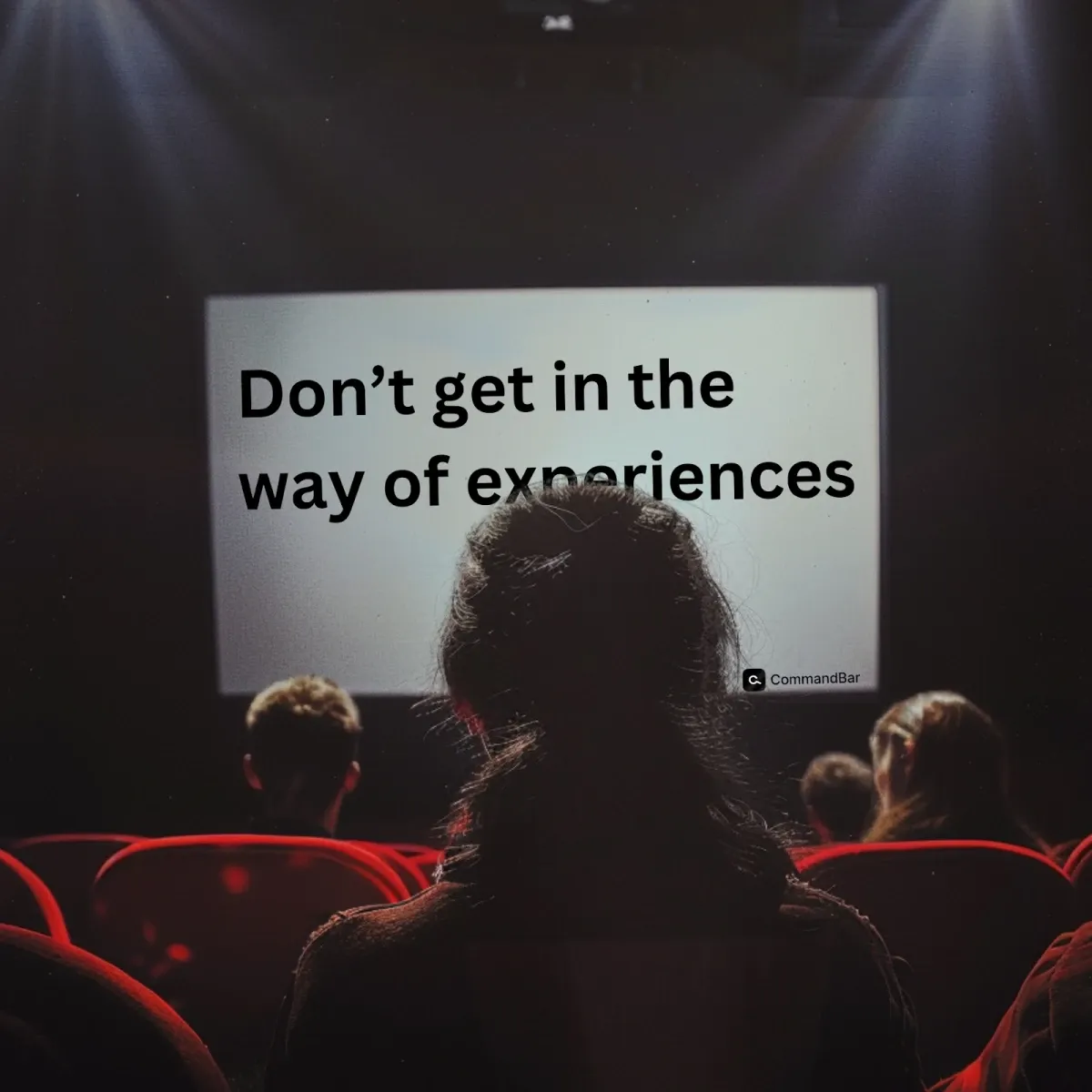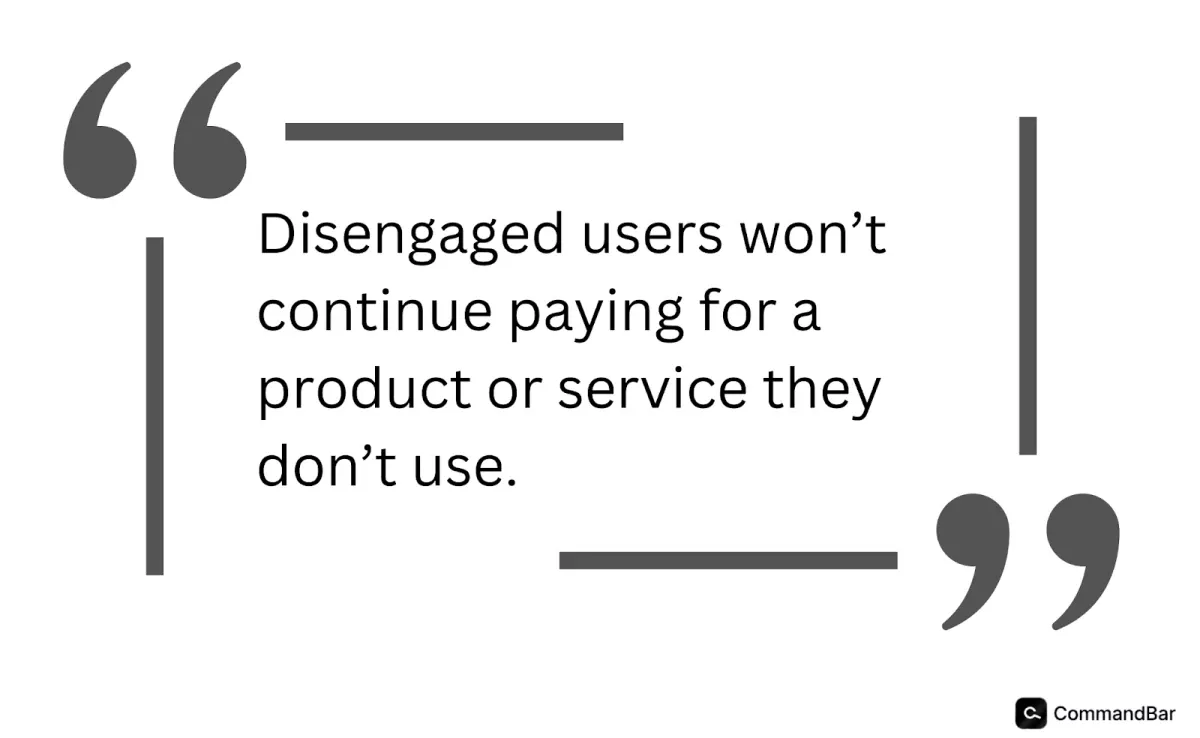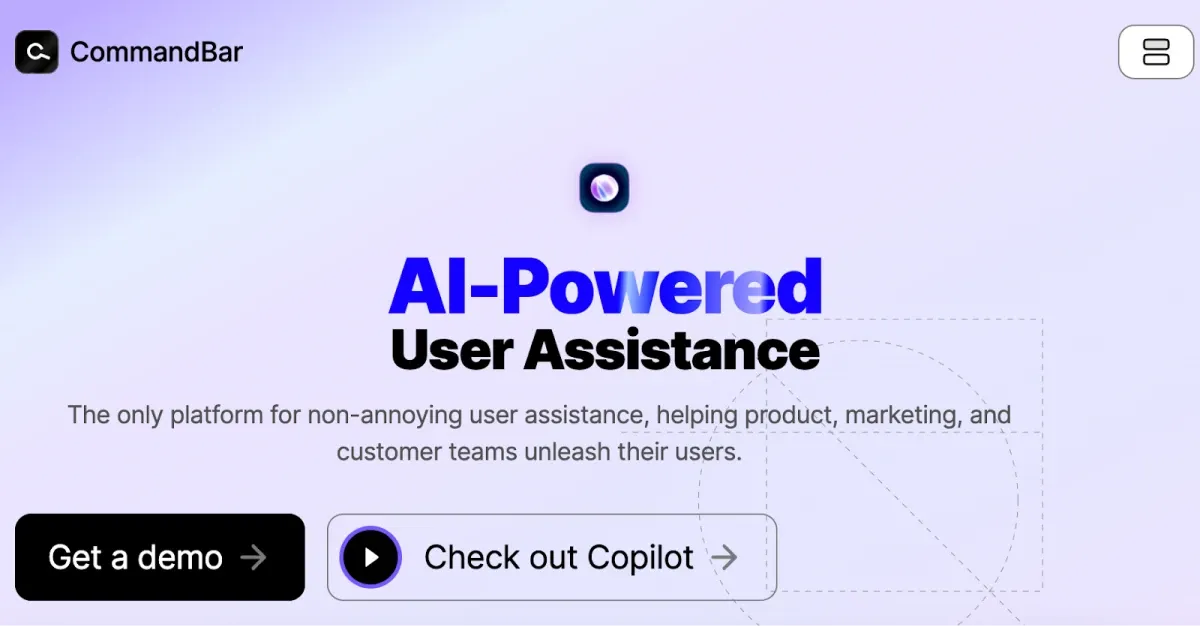Increasing user engagement the right way from the ground up
Increasing user engagement doesn’t have to be complex. And you don’t have to force it on users. Find out how to create a remarkable app experience people love.

Who doesn’t want more user engagement? It’s one of the main ingredients for growth, but so many companies fail to improve it the right way (so it actually works for the long term).
It reminds me of the episode of Chopped when the judge, Scott Conant, tells a chef contestant that he doesn’t like raw red onions.
The contestant is so obsessed with the ingredient that instead of acknowledging the judge’s preference, he doubles down on his misguided quest to prove that Conant may like the red onion–filled dishes after all. The chef even made the raw onions into a dessert!
The experiment miserably failed and backfired—but any viewer could’ve predicted that.
In the same way, businesses should also consider improving user engagement and the approach they choose. We see apps try to solve these issues with distracting popups and aggressive, forceful strategies, similar to our chef contestant’s plan of action. But that’s far from what companies should do.

James Evan, CEO of Command AI, stated in The Undefeated Underdogs podcast:
“The problem is that [popups are] annoying… they show up at inappropriate times, they’re too generic… and there’s too many of them… [We should solve the same problem of friction] without the annoyance.”
If brands want to make apps simpler to use and encourage customers to engage, they must first build enjoyable and intuitive customer experiences.
When platforms want to improve how customers interact with their app, they can’t just symbolically throw red onions at everyone and hope they like them. Companies must identify and fulfill unique user needs through personalized customer journeys.
Why increasing user engagement should be a leading goal
Users churn for many reasons, and brands struggle to hold a strong customer retention rate. But often, the reasons brands think cause churn are only symptoms of one big problem.
As a SaaS, you want high user engagement.
Considering you provide a service on a day-to-day basis and that customers renew monthly or yearly, you have to prove your value consistently. Disengaged users won’t continue paying for a product or service they don’t use.
If you can increase user engagement, everything else follows.
You have happy customers.
Users utilize all your features.
With higher user satisfaction, your metrics start looking healthy again. There are more active users, fewer churned cases, and other promising signs of better user engagement metrics.
But like a chef who doesn’t get the message when you tell them you hate red onions, businesses fail to increase engagement through a personalized and sustainable method for the long term.
Instead, apps get louder. And last I checked, no one likes the sound of someone screaming in their ears—it’s a fast way for a business to lose a customer.
It’s critical that SaaS solutions identify what makes healthy user engagement and strategically target users through personalized methods.

Defining the foundation of engagement
We throw the word “engagement” around like a tennis ball. The difference between most brands and a pro tennis player is that, unlike the pro, companies are hitting the ball high in the sky, hoping they get lucky and the ball lands in the right place.
Before you improve user engagement, consider focusing on the type of experiences you want to create for users.
First foundation: User experiences should be memorable
Like Seth Godin’s thesis in The Purple Cow, you need to create something so remarkable that loyal customers can’t help but become super fans.
SaaS businesses can apply these principles right from the start of user onboarding through the everyday app experience.
When users log in for the first time, they can experience a customer activation process that takes only a minute or two. Immediately, they experience your app’s value and get to the aha moment.
As users navigate your app, they access diverse resources, from videos to AI chat assistance to checklists and nudges showing users your best features. The easier it is for a customer to get to know and fall in love with your app, the closer you are to improving long-term customer engagement.
Second foundation: User experiences should be personal

Once we make an app memorable, we have to ask, “Yeah, but for who?”
Your remarkable expertise should have a core vision, which should be adaptable and customized for each user segment.
If you go to a fast-food restaurant for a chicken sandwich, you might have a specific version in mind. Say you want pickles, mayo, and tomatoes on your sandwich, but you get something totally different—one with BBQ sauce and cheese. It’s the same chicken, but the difference is that the sandwich isn’t yours—it has an unfamiliar flavor you don’t particularly like, as if it were meant for someone else.
As a leader for your tool, you wouldn’t want someone getting an experience they didn't like.
Even worse, you wouldn’t want to force someone to go through an experience they don’t like. You’ll make them run away faster than the live chicken before it became a sandwich.
SaaS brands should create personalized in-app experiences that identify each user segment and send them to the right customer journey with an immediate and specific time-to-value.
For example, you get immediate information if a user signs up and fills out your onboarding survey. Let’s say you are an app for B2B contracts and digital signatures.
The user indicates that she wants to send a contract for a signature, and she already has the document. Instead of having to take an unwanted product tour about building out a contract, she’s able to go through a direct checklist journey that shows her how to upload the file and send an invite to the recipient.
In under a couple of minutes, she experiences the exact use case she wanted in the first place.
If you can quickly win over the user with a personal journey, you can expect better user engagement based on customer satisfaction and loyalty.
Once you have established a foundation for effective user engagement strategy, you can focus on adjusting your strategy for better results.
Is this scale working? Measuring engagement based on industry and cohort
If there’s one thing we see daily at Command AI, it’s that each sector and platform has different engagement standards.
Think of it this way.
TikTok’s user engagement is dramatically different from that of a B2B SaaS that provides manufacturers in Asia with logistics solutions. The goals, user engagement strategies, touchpoints, and user behavior are dramatically different.
It’s a little bit like losing weight. Someone who needs to shed 10 pounds due to inactivity will have an entirely different exercise and diet plan than someone who needs to lose 100 pounds because their food portions are too large.
SaaS companies can first study their industry and competitors to understand what healthy benchmarks look like. But more importantly, companies should start from where they are currently.
Each SaaS has a unique starting point. Leaders can create healthy and sustainable goals to improve through realistic expectations.
Yeah, but who are we talking about? Strategy by segments
Not all users are the same. They come from different acquisition channels and have varying degrees of needs and trust. There are different types of demographics. And each user shows behavioral patterns that differ from others.
If you jumble everyone together, improving engagement can be difficult. Sure, you can calculate an engagement rate for all users, but then you are back at square one. You need a strategy. And it’s impossible to improve when different users need different things.
By segmenting audiences, you can more effectively categorize different user needs and behaviors. Companies can study how multiple users engaged through cohort analyses. They can recognize dominant and trending patterns per group.
For example, you might notice a group of super users using your first-tier plan. They max out your features and spend much time on your app.
Naturally, you reach out and tell them about your next tier. However, some of those who upgrade either discontinue the better package or leave your app altogether.
So, you investigate and find that the onboarding process for the next tier has gaps that lead to frustration, poor feature activation, and low feature usage. The decrease in engagement eventually leads to churn.
Once you discover the problem, you can provide a better experience for the upgrade transition.
The more SaaS platforms segment groups based on acquisition and behavior, the better they implement effective action thanks to first-party data research. Companies can track user engagement, implement tactics, and improve results.
What’s the right way to increase user engagement?
How do you boost user engagement for long-term customer loyalty?
I can tell you what not to do.
It’s not about blasting engagement emails, shoving in-app popups at your users every two seconds, or dumping the same user engagement tactics to your entire customer base.
Those strategies do the opposite, and you’re likely to see your customer engagement decline.
Increasing user engagement starts with understanding your users as unique individuals.
Each person signs up for your app with a specific need in mind. We should meet that use case need as soon as possible. Each user has distinct needs and preferences. For example, some might appreciate nuanced product tours while others want to jump straight into functionalities that cater to their dietary preferences such as Keto, Vegan options, and Protein plans.
When a user signs up, ask them directly what they need. When they tell you they want to try a particular feature or get a certain outcome, your onboarding journey should take them to the goal. Each user should get a specific product tour that reflects their intent.
Throughout the customer journey, users should have the ability to send user feedback and engagement through various methods:
- In-app guidance
- Helpful nudges instead of annoying popups
- AI chat assistance
- Resource hub
- Various learning and helpful mediums like text, video, and interactive elements
You can increase authentic engagement by servicing users’ needs with pinpoint accuracy.
Behavior analytics: Using data to skyrocket user engagement
If you have ever been on a blind date, you know how nerve-racking it is. You know nothing or very little about the person, and the date can go sideways really fast. What you need is context.
Context gives you information to create positive experiences effectively.
Without context, improving customer engagement is hard, and it can even damage the customer experience itself.
It’s like the friend who talks for 10 minutes about how much he loves grilling in his backyard only to find out that the person he’s getting to know is a passionate vegetarian. That detail would’ve been helpful to know beforehand!
The first way we can understand context is by studying acquisition sources.
How did the user find you and sign up for the app? It could’ve been from an ad, a recommendation, or an article about one of your core features. It is critical to understand how much buy-in the user has and why they are interested in your app.
That’s why the microsurvey is so important. The best way to collect feedback and learn about user intent is to ask users directly.
We also know that people can say one thing but do another. We’re human, after all.
Say you’re walking down the street and a YouTuber stops you and asks about your eating habits. Most of us wouldn't mention the fast-food breakfast we had that morning. Sometimes it’s not even intentional—it’s just a misalignment of our thoughts and actions.
The SaaS leader’s job is to identify those differences and act accordingly to improve customer engagement strategy itself. Behavior analyses help study how customers interact with and through processes.
You can start by finding your app’s friction points. A user assistance platform like Command AI allows you to study behavior through feature usage, user adoption, and more.
One underused strategy is recognizing deadends.
For example, if a user searches for a particular feature or app support and you don’t have it, this could indicate a broader user need.
Once you identify a trend, like the need for a feature, your team can develop the solution. And that comes from studying less obvious or direct customer interactions. The user might not tell you outright that they need something, but their actions point to them looking for something particular.
Why UX and user engagement are intertwined
On the Champs-Élysées avenue in Paris, you’ll see the Louis Vuitton building cleverly and elegantly designed as one of its designer bags. It draws attention as passersby walk past. Fans and customers take pictures and admire the details of the building, like the buckle in the middle of the “bag.”
Not only does this create an experience for the heavy foot traffic passing by, but it also creates a very clear brand message and experience. Even in its buildings, Louis Vuitton is focused on highlighting the details and quality of the products.

In many ways, that’s how UX and user engagement relate to your SaaS tool.
Everything you do should be done intentionally, and the goal is to increase user engagement and customer satisfaction.
The design and flow of your onboarding and app experience should be familiar, clear, and enjoyable. The more you simplify the design and user experience, the easier it is for someone to engage with your app.
It’s all about removing friction within UX writing and design. Think of a fast-food restaurant. If you always have to wait in a long line or the business continues to make mistakes on each order, it would be tough to become a loyal customer even if you loved the food.
Your platform can offer the best solution, but if the experience itself is more complicated than filing taxes, users won't engage with your app for more than a few seconds, let alone continuously.
Types of UX friction
SaaS companies can tackle three types of friction to leverage UX for better engagement.
1. Interaction friction
Interaction friction directly correlates with user engagement. It’s anything that gets in the way of what a user wants to achieve.
Examples of interaction friction are buggy or slow experiences. Or it may take forever to get to what the user wants. They must navigate obstacles and ignore annoying popups on their way to meeting their relevant use case.
Companies often hurt themselves when they force engagement, instead causing interaction friction because users want something else.
2. Cognitive friction
B2B SaaS companies sometimes make their products too complicated. Sometimes the app is too technical and has a high learning curve instead of being an easy-to-use solution with clear objectives.
The answer is creating an intuitive and familiar experience. New users should be able to sign up and experience their first use case in just a minute or two without friction. If they must complete many steps, read documentation, and try things multiple times to achieve success, that brand will experience a high customer churn rate.
Brands can work to get users to the features they need as soon as possible. The design, onboarding journey, and complete app experience should feel natural and second nature to existing users.
Think about the experience of someone handing you a brand-new TV remote. Although it might have some new buttons you have never seen before, you immediately know how to turn on the TV and change the channel.
3. Emotional friction
Finally, customers experience emotional friction when they develop negative feelings about the app experience. This can happen when a brand forces the experience, ironically for more engagement, with annoying popups or irrelevant product tours for the user. Or, maybe the design is confusing and the experience comes off as the opposite of user-friendly.
Once the customer has emotional friction, recovering from a negative perception is very hard. And it’s why brands should focus on creating the right user engagement strategy for targeted users.
Understanding user behavior to create an engaging, personalized experience
A user assistance platform that provides personal experiences and the analytics to increase engaged users is the most effective way to improve customer satisfaction.
The right tool can collect data, help you analyze the information, and offer the features to deploy solutions into your app.
Not only should your partner platform have the features needed to increase customer engagement metrics, but it should also do it correctly. Long-term healthy customer engagement should be filled with personal experiences, not intrusive popups and interactions.
Anyone can force engagement quickly, but not everyone can increase engagement, make customers happy, and build a longer customer life cycle.

Your user assistance platform should provide nudges instead of popups that point users in the right direction. When users sign up for your app or learn about a new feature, they should go through personal checklists with customized options and experience immediate value.
Tools like Command AI provide these innovative new features, along with interactive universal search, resource hubs, and AI chat assistance. Users from all backgrounds and learning styles can experience your app the way they want to with pinpoint personalized engagement.
When companies put customers first and build relationships through innovative engagement strategies and solutions, they can increase customer satisfaction and grow their app.
